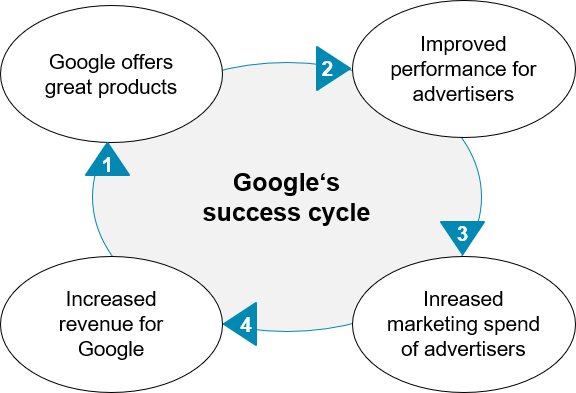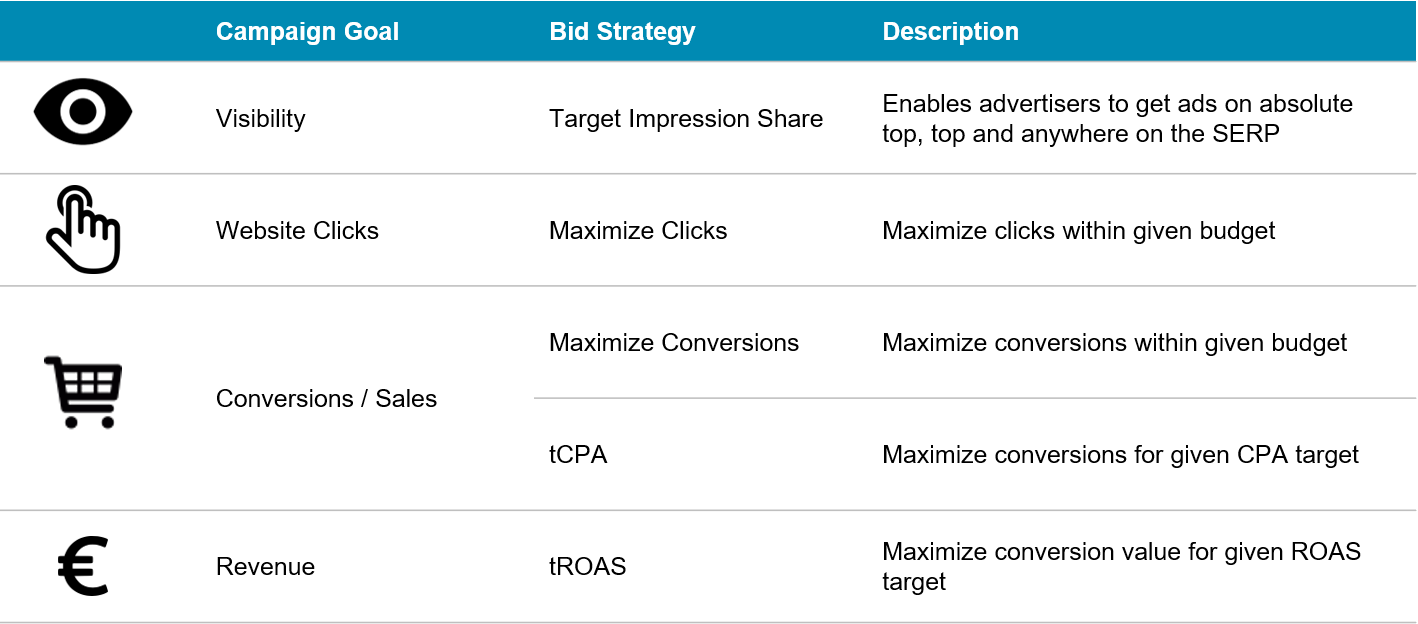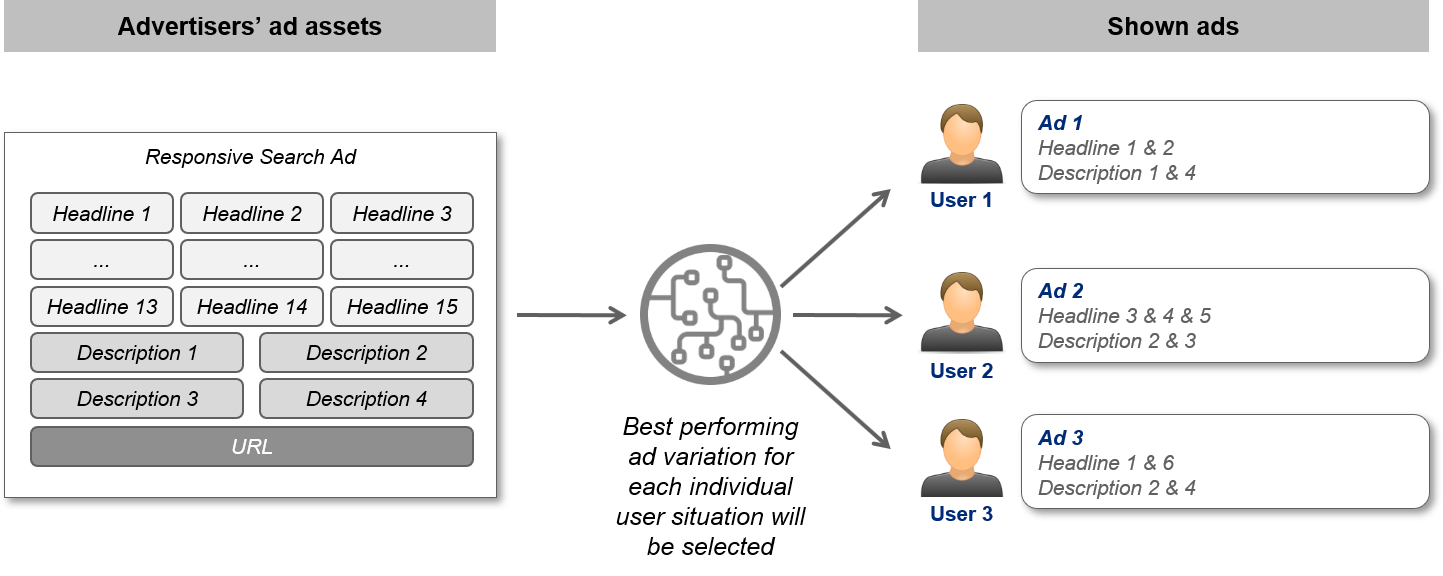Media & Publications
How advertising innovation fuels Google's cycle of success
Author: Fabian Essrich | Date: 12.09.2019 | Language: English
Being one of the most active companies in the development of Machine Learning, Google is not only influencing the life of millions of users, but it is also changing the advertising landscape quite heavily. Thereby, the company aims to fuel and capitalize its user-centric suite of products which has ever since been key to Google’s success. To understand how Google balances their goal with the expectations of thousands of demanding advertisers who put their marketing performance first, I want to dive into how Google’s cycle of success works, describe how Machine Learning drives marketing automation and explains what this means for advertisers.
Understanding Google’s cycle of success
When developing new solutions and products, Google must satisfy two user groups with different expectations. On one side, the company strives to provide a seamless experience for billions of users who are using Google products every day. On the other side, the company aims to satisfy its paying customers (advertisers) with great performing products to increase their marketing ROI. Achieving this fosters a trustful relationship between users and Google as well as advertisers and Google. From a perspective of its paying customers, operating on a highermarketing ROI makes advertisers increase their spend in order to reach marketing goals such as branding, market share or revenue. Ultimately, this leads to an increasing sales volume for Google as well which then is re-invested into new products and solutions to fuel the cycle.

Figure 1: Google’s cycle of success
How Machine learning works at Google
Machine Learning is a widespread term with a great variety in definitions. At Google, Machine Leaning means that algorithms are analysing large amounts of data points with the goal to derive patterns of information. Once those patterns are stored, algorithms can re-use this information and integrate it into future decision making. Interpreting data based on past experiences is a process that is new to machines but a core characteristic of us humans. As an example, let’s think about a child that touches a hot stove. The uncomfortable feeling of pain by touching the hot stove is stored in the child’s brain and will trigger an alert the next time the child gets close to the stove again. Machine Learning algorithms learn in a similar way. The more patterns the algorithm identifies, the better it gets in making decisions.
At Google, Machine Learning is the fundament of the ongoing trend in marketing automation. Based on the large amount of data that Google has access to (e.g. device information, time of query, query content,
location, and much more), algorithms learn to derive decisions that optimize the advertisers’ performance. With the current technological standard, automated decisions from algorithm, which are made in a fraction of a second when users enter queries on Google Search, are reality. This includes, but is not limited to, the decision of setting the right bids or choosing the right ad creatives.
Marketing automation at Google
Obviously, Google translates its Machine Learning technologies into more hands-on products for the advertising industry. To demonstrate how Machine Learning changes the advertising landscape, I want to focus on the process of bidding as well as the creation of ads. Additionally, automated solutions are also affecting further areas such as audiences and attribution. However, those areas will not be the core focus of this article.
Smart Bidding
Smart Bidding is a term that describes the ability to set bids in auction-time taking numerous influential signals into account. In practice, this means that whenever users enter queries in the search engine, the algorithm calculates the optimal bid based on the advertiser’s bidding strategy and the underlying target. Thereby, bidding strategies can follow various goals including increasing visibility, driving traffic in the form of clicks and/or conversions as well as driving revenue. Figure 2 gives an
overview about different Smart Bidding strategies.

Figure 2: Smart Bidding strategies
Ad creation
Google provides several automated ad formats across its product portfolio. Let’s take a look at Responsive Search Ads and Dynamic Search Ads, which are two examples for Paid Search.
Responsive Search Ads is an ad format that automatically combines the given assets (ad headline, ad description) to the best performing alternative. Again, within a fraction of a second the algorithm runs through all possible combinations of headlines and descriptions and predicts the best performing alternative for each individual search query. For advertisers this means that they can serve users with thousands of ad variations by adding just one single ad.

Figure 3: Responsive Search Ads – How it works
Dynamic Search Ads is a powerful tool that allows advertisers to catch traffic purely based on the advertiser’s website content. In comparison to standard campaigns, search queries are not targeted with keywords but are matched with the content of the advertiser’s website. While ad descriptions are still provided by the advertiser, Google’s algorithms automatically generate relevant headlines to serve each individual search query with an ad that optimizes towards the goal of the advertiser’s bidding strategy.
Implications of marketing automation for advertisers
Generally, the automation of processes in technological environments aim for performance improvements. Considering Google’s solutions, this does seem applicable simply because algorithms will outperform humans when large sets of data must be analysed and interpreted within seconds. Also, when applied in real-life scenarios, automated product solutions trigger performance improvements in advertisers’ marketing activities in most of the cases. We must assume when a company like Google rolls out such market changing technologies, that those solutions have been tested properly and positive results are observed for the majority of advertisers.
However, while it might seem like a no-brainer for all partners, Google’s automated solutions do ask for certain requirements that cannot be met by every advertiser. This, for example, includes in certain cases operating without budget restrictions or simply having more conversions to feed the algorithm with enough data. Besides this, I have seen situations where solutions like Smart Bidding were tested in an environment where all required conditions were met, but the expected positive results could still not be achieved.
Therefore, if advertisers are not fully convinced of automated solutions from the very beginning, I advise to not simply assume a better performance but run tests to see whether the products work for each advertiser’s individual situation. Testing on a smaller scale before rolling out fully as well as deriving the right decisions from those tests seem to be a fair solution for me. To do so, Google’s Drafts & Experiments feature is an optimal tool to run A/B-tests.
Moreover, from an organizational perspective, a shift in employees’ tasks can be expected. While key operational tasks such as setting bids or creating ad content are largely automized, working time will be set free. In my opinion, this should not worry advertisers too much. In fact, this time can be used to focus on more strategic tasks such as understanding on how to use these automated solutions to each advertiser’s best advantage.
My advice for advertisers
There are still quite a few advertisers who do not trust Google’s solutions for marketing automation and who do not like Google being in the position to set bids. Those concerns are valid. However, I do advise advertisers to be open and not afraid of change. It is not a secret that any kind of change is uncomfortable. In my opinion, technological change in the advertising landscape will happen if Google continues to demonstrate that performance for advertisers can be improved on a broad level. The risk of not participating in this trend might be higher than the risk of testing and rolling out those market-changing solutions.